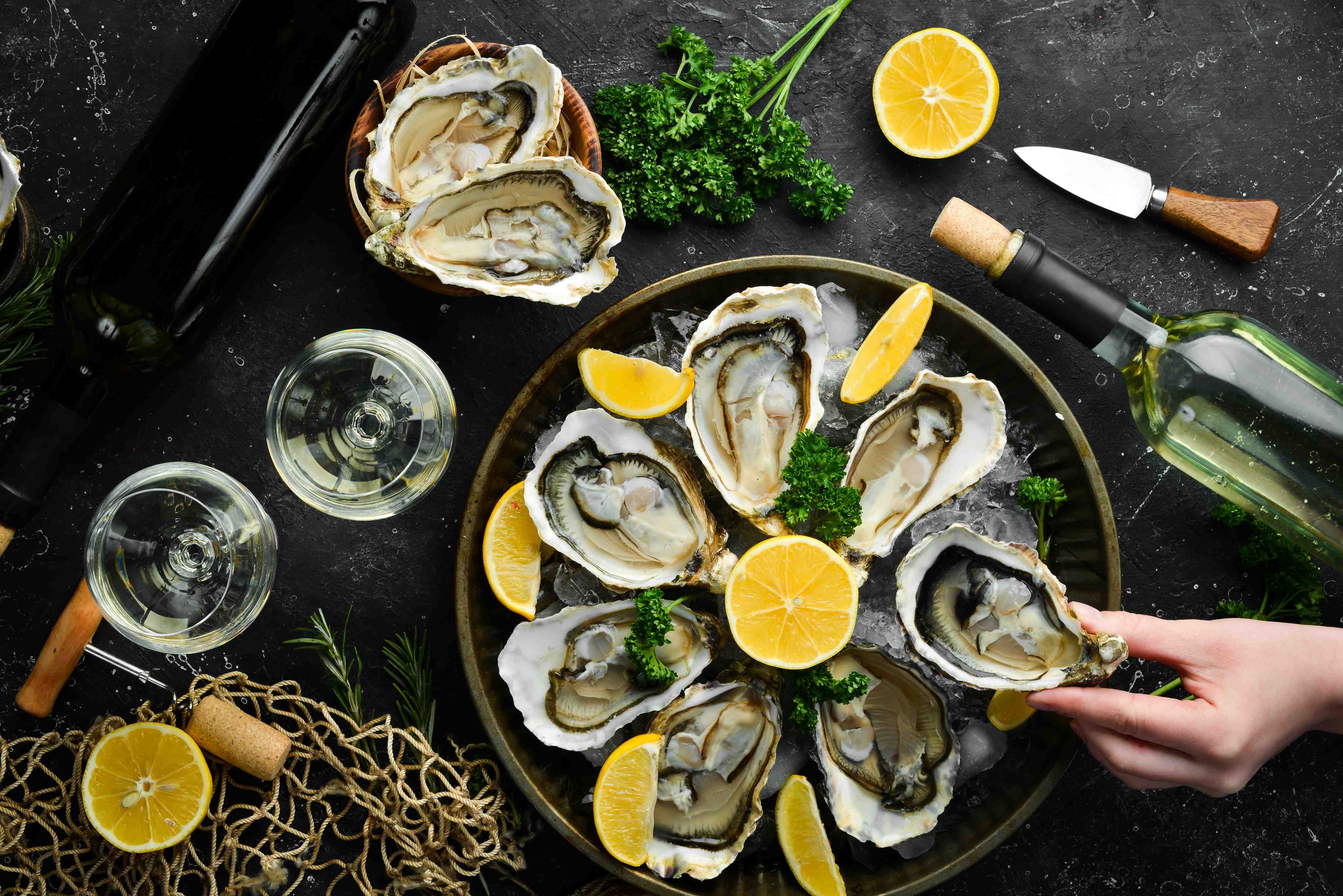Discover the symphony of flavors in France's finest oysters, each with their own unique character and allure.

WHAT SETS FRENCH OYSTERS APART AND MAKES THEM SO EXTRAORDINARY?
France is celebrated for its culinary prowess, and its oysters are a sublime testament to this gastronomic legacy. Cultivated for centuries in the pristine waters of France, these ocean gems have captured the hearts and palates of seafood enthusiasts worldwide. The harmonious blend of their terroir—their unique coastal environment—and meticulous farming techniques bestow upon each variety its distinct and captivating flavor profile. Embark on a sensory journey as we introduce you to ten remarkable French oyster varieties commonly gracing the menus of fine dining establishments:
Belon Oysters: Named after the Belon River in Brittany, these oysters are among France's most coveted. The Belon's unique coppery essence is a result of the river's high iron content, embraced by the oysters. While it may not be for everyone, connoisseurs savor their exceptional flavor.
Gillardeau Oysters: Hailing from the Marennes-Oléron region, Gillardeau oysters are prized for their plump, meaty flesh and delightful, nutty sweetness. Sustainable farming practices ensure their consistent quality.
Marennes-Oléron Oysters: Sharing the flavor profile of Gillardeau oysters, these oysters are typically smaller in size and grown in the same region, benefitting from the region's exceptional farming practices.
Fine de Claire Oysters: Thriving in the shallow waters of Marennes-Oléron, Fine de Claire oysters are celebrated for their gentle flavor and firm, briny texture. Time spent in claires (oyster ponds) imparts a milder taste and a lusciously creamy texture.
Utah Beach Oysters: Grown along the Normandy coast, these oysters boast a crisp, saline zest with a subtle hint of sweetness. Their unique flavor profile owes much to their location and the precise conditions in which they mature.
Spéciale de Claires Oysters: Similar to Fine de Claire oysters, these oysters spend an extended period in claires, resulting in a richer, velvety flavor. Sought after by gourmands, they epitomize luxury dining.
Pousses en Claire Oysters: Among the youngest oysters in Marennes-Oléron, these gems offer a delicate flavor and a tender texture. Highly esteemed for their mild taste, they are frequently enjoyed raw. Look for the Label Rouge for the highest quality.
Fines de Normandie Oysters: Grown along Normandy's coastline, these oysters deliver a fresh, briny essence with a subtle sweetness on the finish. Their versatility allows them to shine whether enjoyed raw, cooked, or grilled.
Pousse en Mer Oysters: Grown in the open sea, these oysters boast plump, juicy flesh with a pronounced marine saltiness. Celebrated for their freshness, they are often savored au naturel, accompanied by a dash of lemon.
Immerse yourself in the symphony of French oysters, each offering a unique melody of flavors and textures. Whether you savor them au naturel, with a delicate preparation, or a splash of zesty citrus, French oysters are a culinary treasure that showcases the nation's unwavering commitment to excellence in gastronomy.

THE ART OF CHOOSING RAW OYSTERS
If you wish to savour these delicacies of the sea, the first step in choosing raw oysters is to examine their appearance. Look for oysters that are tightly closed or have a slightly open shell. Avoid oysters with completely open shells as this may indicate that they are dead or compromised in some way. The shell should also be moist and not cracked or damaged. Fresh oysters should have a pleasant and clean smell of the sea. If you notice any foul or off-putting odors, it is best to avoid them. The aroma should be subtle and reminiscent of a fresh ocean breeze. Oysters come in various sizes, but the size itself does not necessarily affect the flavor. However, it is important to note that larger oysters may have a chewier texture compared to smaller ones. Choose the size that suits your preference and the dish you plan to prepare.
Moreover, it is wise to consider the source of the oysters. Different regions produce oysters with distinctive flavors due to variations in water temperature, salinity, and local food sources. Popular oyster harvesting regions include the east coast of the United States, the Atlantic coast of France, and the Pacific coast of Canada. Research the origin of the oysters to determine the taste profile you prefer.

Oysters are typically available year-round, but their flavor may vary depending on the season. During the summer months, oysters tend to have a sweeter taste, while winter oysters often have a more briny and robust flavor. Experiment with different seasons to find your personal preference.
Proper handling of raw oysters is of utmost importance in order to mitigate potential health hazards. It is crucial to store them at approximately 4°C to uphold their freshness and prevent exposure to direct heat or sunlight. Furthermore, to ensure optimal taste and quality, it is advisable to consume them within one or two days after purchase. It is essential to procure oysters from reputable sources that adhere to stringent guidelines for handling and storage, as refrigeration helps minimize bacterial contamination.

When selecting fresh oysters, careful attention should be paid to factors such as appearance, odor, size, location, and time of year. It cannot be overstated that proper storage and handling practices are indispensable for preserving the quality of these delectable oysters. Armed with these tips, you can confidently embark on a journey of savoring the marvelous flavors of these prized seafood delicacies.